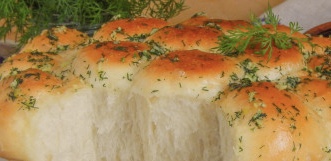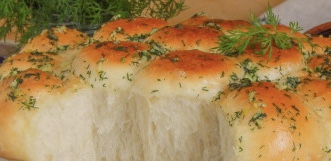



What do you associate with a plate with hot, still steaming borscht? Of course, borscht with donuts! Ruddy and fluffy buns with a fragrant garlic-dill cap that go perfectly with this delicious and hearty first course. Garlic donuts are good on their own - so why don't we cook them today?
The recipe for garlic dumplings is not at all complicated: if you have ever cooked homemade cakes on yeast dough, there will be no problems with these buns either. This option does not contain animal products, so you can eat them during Lent. And borscht can also be cooked not necessarily with meat, but in the lean version - in a rich vegetable broth.
Airy donuts with garlic and dill turn out to be so appetizing and so fragrant that it is difficult to deny yourself and not feast on a couple more. I'm just sure you will fall in love with them the first time and cook over and over again. Otherwise, there is no way ...

What do you associate with a plate with hot, still steaming borscht? Of course, borscht with donuts! Ruddy and fluffy buns with a fragrant garlic-dill cap that go perfectly with this delicious and hearty first course. Garlic donuts are good on their own - so why don't we cook them today?
The recipe for garlic dumplings is not at all complicated: if you have ever cooked homemade cakes on yeast dough, there will be no problems with these buns either. This option does not contain animal products, so you can eat them during Lent. And borscht can also be cooked not necessarily with meat, but in the lean version - in a rich vegetable broth.
Airy donuts with garlic and dill turn out to be so appetizing and so fragrant that it is difficult to deny yourself and not feast on a couple more. I'm just sure you will fall in love with them the first time and cook over and over again. Otherwise, there is no way ...
Sign up to receive email updates on new recipes.